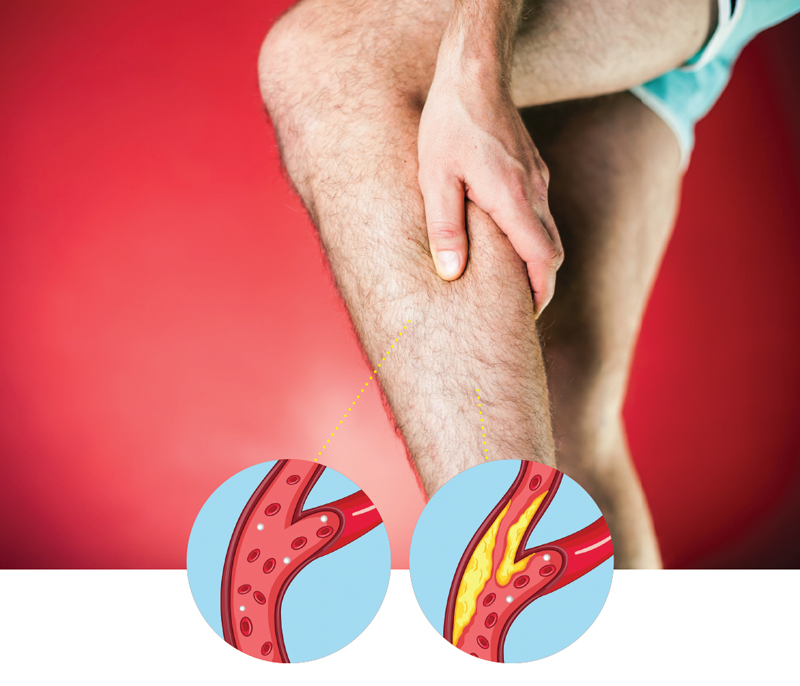Walking is considered as one of the best exercise for a better health. But what if your leg causes pain, which is not a part of your aging?
Many people ignore the leg pain as a normal sign of aging. Sometimes you may think it’s arthritis, sciatica or just “stiffness” from getting older. In some cases, it is the sign of Peripheral Artery Disease (PAD), putting your heart and brain health at greater risk.
While PAD doesn’t usually run in families, it occurs due to various reasons like aging, smoking, having high blood pressure, high cholesterol or diabetes. If you have any of the risk factors for PAD, you should ask your doctor about PAD even if you aren’t having symptoms yet.
What causes leg pain when you have PAD?
People with PAD have fatty deposits in the arteries outside the heart, usually in their legs. When these deposits block blood flow to the muscles, impairing their ability to work properly, it causes pain.
Initially it was thought that PAD occurs mostly in men, but later study found that the condition is just as common in women affecting one in every 10 women over age 50. [Source: Harvard Health Publishing]
Symptoms of Peripheral Artery Disease (PAD)
Leg pain is a very common symptom of having PAD, but not everyone has the same symptoms. Some may experience just weakness without any pain or cramping in leg. Yes, it has the same pattern that is worsening with exercise or movements and easing with the rest.
In some cases, people notice other changes such as:
- Slow healing sores on the feet
- Coldness in one of both feet
- Slow or poor growth of toenails or leg hair
- Gangrene, or dead tissue
- Leg pain that does not go away when you stop exercising
Why you can’t ignore the leg pain while walking
Of course PAD is not the only reason of leg pain, but it’s important to consider at the same time. Having PAD increases your risk of other cardiovascular diseases. This makes a person with PAD far more likely to have a heart attack or a stroke than someone without the condition.
If your doctor suspects you have PAD, you might want to follow up with a peripheral angiography, which uses MRI or x-rays to take images of your arteries to look for blockages.
Treating PAD with lifestyle changes and more…
PAD treatment always starts with a healthy lifestyle that includes avoid smoking and other tobacco products, regular exercise, healthy diet rich in fruits and vegetables and consuming healthy fats.
One of the most important is ignoring the leg pain thinking it as a part of getting old. That’s exactly what you should not do. Talk to your doctor immediately and find out why it occurring.
In addition to lifestyle changes, your doctor may also prescribe some medications to treat PAD. Most common drugs prescribed for people with PAD are to keep more fatty deposits (plaque) from accumulating, preventing blood clots and controlling high blood pressure.
If you are diagnosed with severe blockage, your doctor may also recommend a procedure to clear the blockage or to reroute blood flow around it. Always remember, “the longer you wait, the harder it is to treat.”















